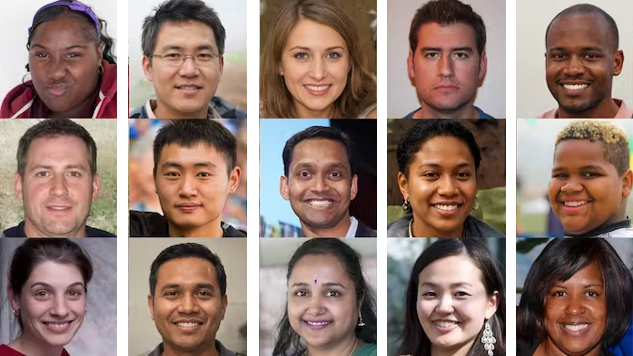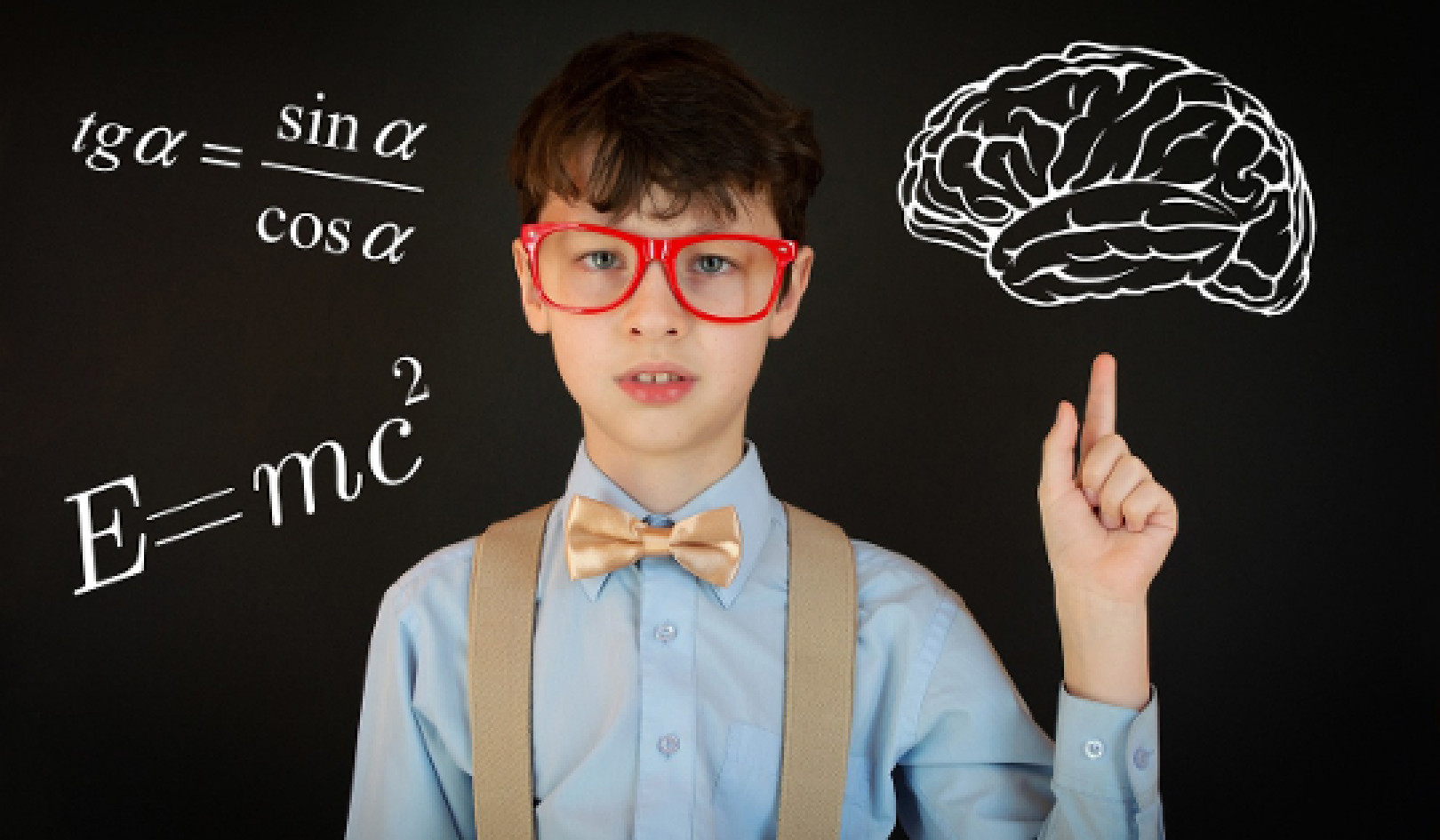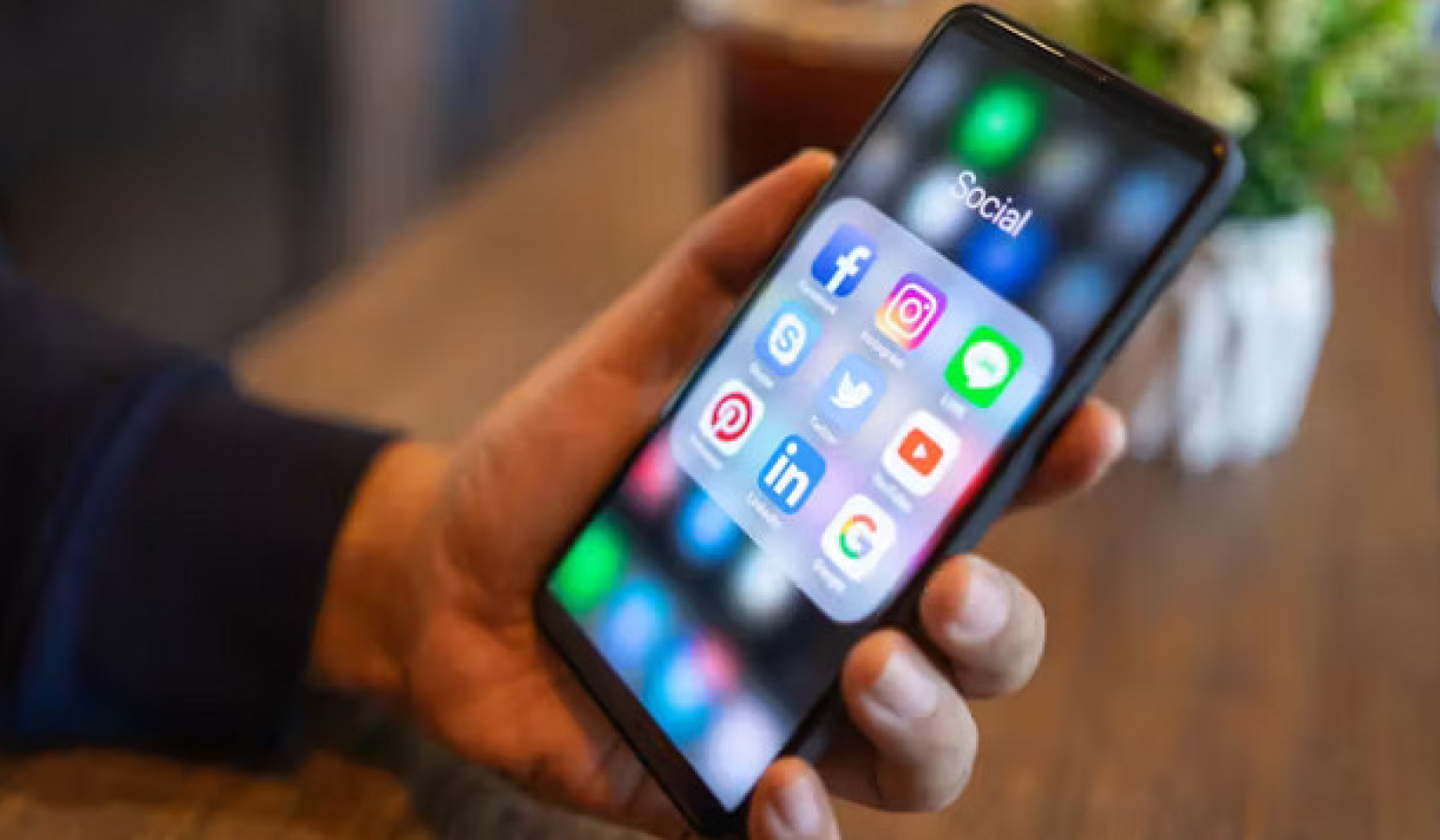
Can you tell which faces are real and which are synthetic? Answers are at the bottom of the article. Robin Kramer, Author provided
For a while, limitations in technology meant that animators and researchers were only capable of creating human-like faces which seemed a little “off”.
Films like 2004’s The Polar Express made some viewers uneasy because the characters’ faces looked almost human but not quite, and so they fell into what we call the “uncanny valley”. This is when artificial faces (or robots more generally) look increasingly human and get very close to resembling us while still showing signs of being artificial, they elicit discomfort or even revulsion.
Recent advances in artificial intelligence (AI) technology mean that we have well and truly crossed the valley. Synthetic faces now appear as real as genuine ones – if not more so.
You may have come across the website ThisPersonDoesNotExist.com. By repeatedly visiting the page, you can generate an unlimited number of images of faces, none of which belong to real people.
Instead, these synthetic faces are created by an AI algorithm known as a “generative adversarial network”. This is made up of two neural networks – essentially, computer models inspired by how neurons are connected in the brain.
These networks compete with each other. One generates new, plausible images (faces, in this case), while the other tries to discriminate real images from fake ones. Through a feedback loop, the generator learns to produce increasingly convincing images that the discriminator fails to spot as fake.
By using a large set of real photographs, along with the images produced by the generator, the system eventually learns to produce realistic, new examples of faces. The final generator is what’s producing the images you can see on the website.
Researchers have found that people shown synthetic faces mixed in with real ones struggle to tell the difference. Participants classified the faces correctly only 48.2% of the time according to one study – slightly worse than random guessing (which would give 50% accuracy). They also rated synthetic faces as more trustworthy than real ones.
Another study found that synthetic faces were rated as more real than photographs of actual faces. This might be because these fake faces often look a little more average or typical than real ones (which tend to be a bit more distinctive) as a result of the generator learning that such faces are better at fooling the discriminator.
Unconscious awareness in the brain
In another recent study, researchers in Australia delved deeper into our ability to tell the difference between real and synthetic faces. In their first experiment, online participants failed to distinguish between the two types of faces, and again perceived the synthetic faces as more real than the real ones.
However, their second experiment seemed to tell a different story. A new sample of participants, this time in the lab, were asked to wear electroencephalography (EEG) caps on their heads. The electrodes fitted to these caps then measured the electrical activity in the participants’ brains.
During the task, different faces were presented in a rapid sequence, and while this was happening, participants were asked to press a button whenever a white circle (shown on top of the faces) turned red. This ensured participants were focused on the centre of the screen where the images were being shown.
The results from the EEG test showed that brain activity differed when people were looking at real versus synthetic faces. This difference was apparent at around 170 milliseconds after the faces first appeared onscreen.
This N170 component of the electrical signal, as it’s known, is sensitive to the configuration of faces (that is, the layout and distances between facial features). So one explanation might be that synthetic faces were perceived as subtly different to real faces in terms of the distances between features like the eyes, nose, and mouth.
These results suggest there is a distinction between how we behave and what our brains “know”. On the one hand, participants couldn’t consciously tell synthetic faces from real ones, but on the other, their brains could recognise the difference, as revealed by their EEG activity.
Although it may be surprising to think that our brains have access to information that is outside of our conscious awareness, there are many examples of this in psychology.
For instance, blindsight is a condition typically found in people who are blind in one half of their visual field. Despite this, they may be able to respond to objects placed on their blind side that they deny being consciously aware of.
Studies have also shown that our attention is drawn to images of naked people, even when we’re unaware of seeing them. And we’ve all heard of the concept of subliminal advertising, although lab experiments fail to support the idea that it actually works.
Now that synthetic faces are so easy to produce, and are as convincing as real photographs, we should be concerned about fake online profiles, fake news, and so on. Such advances in AI technology will have serious implications in the near future – there must be safeguards and other measures put in place to mitigate these dangers.
Perhaps the cues that our brains seem to use when spotting synthetic faces will prove useful in developing ways to identify these fakes in the coming years.
In the array of faces at the top of the article, the real and synthetic faces are as follows (from left to right):
R S S R S
S R R S R
R S R R R ![]()
Robin Kramer, Senior Lecturer in the School of Psychology, University of Lincoln
This article is republished from The Conversation under a Creative Commons license. Read the original article.
Books on Improving Performance from Amazon's Best Sellers list
"Peak: Secrets from the New Science of Expertise"
by Anders Ericsson and Robert Pool
In this book, the authors draw on their research in the field of expertise to provide insights into how anyone can improve their performance in any area of life. The book offers practical strategies for developing skills and achieving mastery, with a focus on deliberate practice and feedback.
Click for more info or to order
"Atomic Habits: An Easy & Proven Way to Build Good Habits & Break Bad Ones"
by James Clear
This book offers practical strategies for building good habits and breaking bad ones, with a focus on small changes that can lead to big results. The book draws on scientific research and real-world examples to provide actionable advice for anyone looking to improve their habits and achieve success.
Click for more info or to order
"Mindset: The New Psychology of Success"
by Carol S. Dweck
In this book, Carol Dweck explores the concept of mindset and how it can impact our performance and success in life. The book offers insights into the difference between a fixed mindset and a growth mindset, and provides practical strategies for developing a growth mindset and achieving greater success.
Click for more info or to order
"The Power of Habit: Why We Do What We Do in Life and Business"
by Charles Duhigg
In this book, Charles Duhigg explores the science behind habit formation and how it can be used to improve our performance in all areas of life. The book offers practical strategies for developing good habits, breaking bad ones, and creating lasting change.
Click for more info or to order
"Smarter Faster Better: The Secrets of Being Productive in Life and Business"
by Charles Duhigg
In this book, Charles Duhigg explores the science of productivity and how it can be used to improve our performance in all areas of life. The book draws on real-world examples and research to provide practical advice for achieving greater productivity and success.























